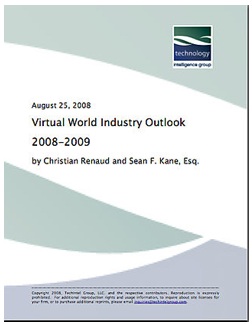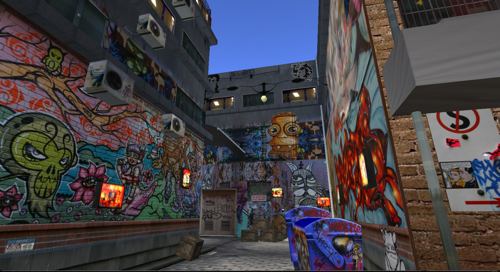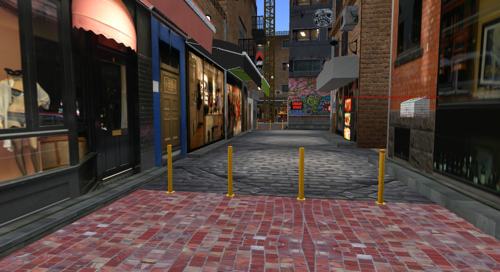1. LA Times (USA) – Fans flock to Disney’s Club Penguin Times. “The newspaper industry is constantly bewailing its need for a new economic model, as the Internet upends the old one. Maybe it could take a page from the Club Penguin Times. The Club Penguin Times, after all, is more widely read than New York’s Daily News, the Chicago Tribune or the Dallas Morning News. And it’s not even 3 years old.”
2. Half Life Source (USA) – Sony confirms that the PS3 Home 3D virtual online community service has been delayed until later this year. “Sony Corp’s game unit said on Tuesday it was delaying the launch of its “Home” 3D virtual online community service for the PS3 game console to later this year. It’s been the second such delay for the PlayStation 3. Last Year, Sony postponed the launch of the “Home” service, which is aimed at giving users a place to interact with other PS3 users, to early this year from last Winter.”
3. SecurityPro News (USA) – Next Malware Breeding Ground: Online Games? “Dr. Igor Muttik, senior architect for McAfee Avert Labs, has published a 19-page whitepaper (PDF) warning we may soon see a spike in malware targeting in virtual worlds and online gaming. What would they want with virtual goods? The same thing they always want: money. Virtual goods and currencies can be traded for real goods and currencies. General data can work too for nefarious purposes, so key-logging and the like are distinct possibilities. ”
4. Institute for Ethics and Emerging Technologies (USA) – Goertzel on “OpenCog Prime: Design for an Open-Source Thinking Machineâ€. “Dr. Ben Goertzel from Novament will be in the area and has graciously offered to give a presentation of their current project on Sept. 7: Topic: OpenCog Prime: Design for an Open-Source Thinking Machine (Underlying Principles and Early Experiments) OpenCogPrime is a highly detailed software design, aimed at powerful Artificial General intelligence at the human level and ultimately beyond, intended to be implemented within the OpenCog open-source AI software framework.”
5. 1UP.com (USA) – Building a Better Virtual World Through Democracy. “EVE Online is a massive and persistent universe where players have direct involvement in both the economy and the game’s political system. This serves as an important, always-changing, plot device. But because of this, for better or worse, the world lives and dies by community involvement to a much greater degree than most MMOs. If things start to go bad, the game’s subscribers can’t simply take their character over to another server. Unfortunately, some employees of the game’s developer, CCP, have been caught trying to manipulate the system. In response, CCP created an Internal Affairs division to monitor the activities of both player and staff accounts.”
6. Times Online (UK) – Computer warriors pay geek mercenaries to fight their wars for them. “Andy Crowther used to have time to play a lot of computer games. Not any more. At 33, he is now a supermarket manager in North London and has a girlfriend. Despite the intrusion of real life, Mr Crowther still enjoys slaughtering hordes of monsters and capturing treasure in online games such as World of Warcraft and Star Wars Galaxies. But, like increasing numbers of gamers, he no longer has endless hours to earn the “virtual gold†needed to buy weapons and upgrades which make the game more fun. Luckily for him, 400,000 geeks, mostly in East Asia, are available for hire at the click of a button.”
7. itbusiness.ca (Canada) – Toronto’s Webkinz brings fantasy world to real global market. “Webkinz has become a household name in North America by appealing to children with its brand of cuddly, plush animals that come with a key that grants access to a virtual world. Now the company is hoping it can evoke the same interest internationally. Pre-teen kids and their parents are very familiar with the plush phenomenon started by Woodbridge, Ont.-based Ganz Inc. in 2005.”
8. Medical News Today (USA) – Burnt Kids’ Pain Lessened By Distracting Device. “Cunningly disguised as a toy, a new medical device that harnesses the power of distraction can greatly reduce the pain felt by young burns victims. Designed for medical device company Diversionary Therapy Technologies by Sam Bucolo, who is a Queensland University of Technology industrial design Associate Professor, Ditto is a virtual reality-inspired diversionary therapy aid. ”
9. The Washington Post (USA) – Gameworld: Videogaming enters the Third Dimension. “Videogamers, your glasses to transport you into three dimensional space. Visual computing technology company Nvidia (NVDA.O) has unveiled the first mainstream 3D gaming technology at the inaugural NVISION 08 conference in San Jose, which focused on the convergence of technology with Hollywood, games and business. With Hollywood migrating to 3D for event movies like “Journey to the Center of the Earth” and next year’s “Avatar” from James Cameron, the electronics and gaming industries have created new technology that lets home systems and PCs also deliver true 3D.”
10. iTnews (Australia) – VIC government shuts down Second Life presence. “The virtual bulldozers have moved in on Melbourne Laneways on Second Life’s ABC Island, after Multimedia Victoria said it would not renew the lease. The research project was launched in October 2007 to test the ‘potential impact [of virtual worlds] on the economic and social lives of Victorians’.”






Recent Comments